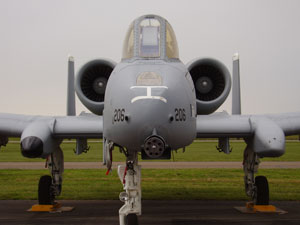More Information: The Air Force fiscal year 2015 budget begins the divestment of the A-10 fleet on the grounds that there are other combat aircraft that can perform its mission, including the F-35. However, Gen. Mark A. Welsh III, the Air Force chief of staff, admits the F-35 will not be fully operational until 2021.
The A-10 is a proven, cost-effective capability that has unique qualities separating it from other combat aircraft. It is able to fly low and slow, even in inclement weather, with quick re-attack times. It can also sustain repeated enemy fire.
Gen. Ray Odierno, the Army chief of staff, testified before Congress that the A-10 is the “best close air support platform” today in the military. Additionally, broad evidence shows the F-16, the F-15 and, very likely, the F-35 are too fast, too imprecise, too vulnerable, and lack the endurance to operate in the near-ground environment and meet the discrete targeting needs of today’s contested airspace.
Moves by the Air Force to rapidly scale back its combat capability will put our nation at risk, and threaten the viability of our Air National Guard fighter community capacity moving into the future. Even if the F-35 can provide the close air support of the A-10, as the Air Force says, the nation will not have an operationally viable F-35 fleet for years to come. A gap in close-air support capability is unacceptable.
As we draw down in the Middle East, and shift towards the pacific, our Air Force must maintain a full spectrum of air assets in order to protect our troops on the ground. Our A-10s provide that support spectacularly and in a cost-effective manner.
Please urge your senators and representatives to provide funding to maintain and protect the A-10 from divestiture.
NGAUS Point of Contact:
Mary Catherine Ott
Legislative Affairs Manager, Air Programs and Cyber Security
202-508-5884
marycatherine.ott@ngaus.org


